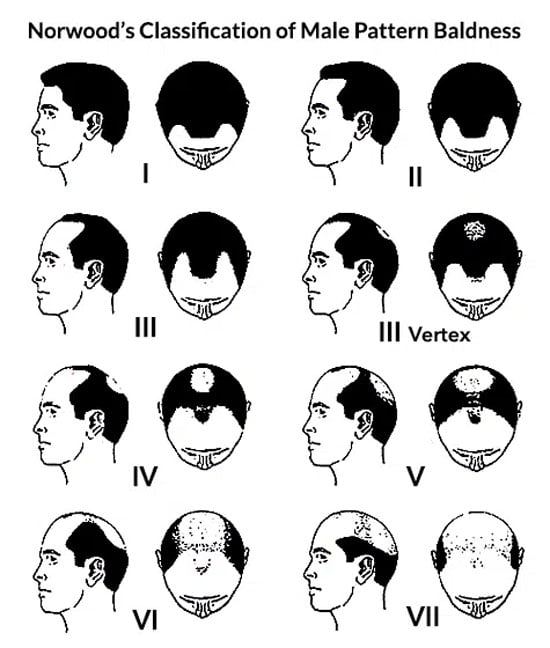- Home
- Hair Loss
- Hair Transplant Cost
- Hair Treatment
- HT Techniques
- Clinics
- Results
- Doctors
- Blog
- Contact Us
- Home
- Hair Loss
- Hair Transplant Cost
- Hair Treatment
- HT Techniques
- Clinics
- Results
- Doctors
- Blog
- Contact Us

Hair loss generally known as baldness or alopecia refers to the loss of a significant amount of hair from the scalp beard or other body parts. As per new data, more than 50% of the male population over the age of 30 started going bald or affected by androgenic alopecia / male pattern baldness or started having signs of it.
It found genetics play a major role, as men who have close relatives with baldness or androgenic alopecia are more likely to develop the same but at an early age.
The main mechanism through which it happens is the action of DHT on the hair follicular growth cycle for slow and poor growth of certain specific areas of the scalp in a patterned manner. DHT not only causes poor hair growth but also leads to dandruff, oily scalp, and many more scalp problems as well.
In the Initial days when hair transplants and PRP treatment were not available, only DHT-blocking medicines were the only choice of treatment option available.



Norwood and Hamilton are the scientific researchers and doctors who have analyzed the typical sequence in which people suffer from male pattern baldness.
They noticed that hair loss initially leads to thinning of the frontal and temporal area of the hairline and then starts receding towards the crown. Which is known as the early stage/ level of baldness. Later on, at the top of the scalp, the crown area also starts thinning and showing bald patches or areas that gradually merge with the front baldness zone with age. When the front and crown are merged, this stage of baldness is known as the advanced stage of baldness.
Because the treatment plan or prevention of baldness is set according to the level of baldness, if someone is in the initial early stage of baldness that is grade 1-2-3, there are still chances he may recover his lost hair growth or density through medical management if done on time.
If someone is at an advanced stage, it’s not possible to recover a full scalp from baldness, and to get such an outcome he may need to go under a hair transplant procedure as well along with routine medical management.

Hairfree & Hairgrow has grown exponentially and now we do provide extra facilities to our clients. We provide them with lodging areas, hygienic food and refreshments
©2024 Hairfree & Hairgrow All rights reserved. Developed by Priyesh Khatrani